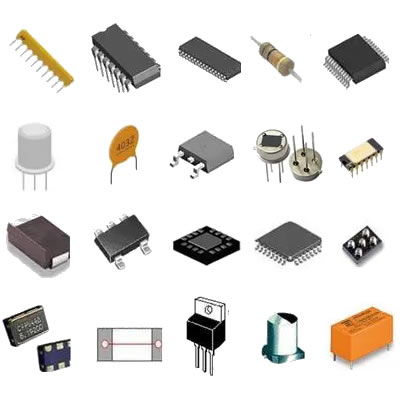What is a resistor and what is the current status of the industry?
What is a Resistor and What is the Current Status of the Industry?
I. Introduction
In the realm of electronics, resistors play a fundamental role. A resistor is a passive electrical component that limits or regulates the flow of electrical current in a circuit. By providing resistance, these components are essential for controlling voltage and current levels, ensuring that electronic devices function correctly and safely. The importance of resistors cannot be overstated; they are found in virtually every electronic device, from simple household appliances to complex industrial machinery.
As we delve into the current status of the resistor industry, it becomes evident that this sector is experiencing significant changes driven by technological advancements, market demands, and environmental considerations. This blog post will explore the nature of resistors, their applications, manufacturing processes, current trends, challenges, and future outlook.
II. Understanding Resistors
A. Basic Principles of Resistance
At the core of understanding resistors is Ohm's Law, which states that the current (I) flowing through a conductor between two points is directly proportional to the voltage (V) across the two points and inversely proportional to the resistance (R) of the conductor. This relationship is expressed mathematically as V = I × R.
Resistance can be categorized into two types: static and dynamic. Static resistance refers to the constant resistance of a component under steady-state conditions, while dynamic resistance varies with the current and voltage conditions, often seen in non-linear devices.
B. Types of Resistors
Resistors come in various types, each serving specific functions:
1. **Fixed Resistors**: These resistors have a predetermined resistance value and are widely used in circuits.
- **Carbon Composition**: Made from a mixture of carbon and a binding material, these resistors are inexpensive but have a higher tolerance.
- **Metal Film**: Known for their accuracy and stability, metal film resistors are often used in precision applications.
- **Wire-Wound**: Constructed by winding a wire around a core, these resistors can handle high power and are used in high-performance applications.
2. **Variable Resistors**: These allow for adjustable resistance values.
- **Potentiometers**: Commonly used for volume control in audio equipment, potentiometers can vary resistance by turning a knob.
- **Rheostats**: Similar to potentiometers but designed to handle higher currents, rheostats are used in applications like dimmer switches.
3. **Specialty Resistors**: These resistors are designed for specific applications.
- **Thermistors**: Temperature-sensitive resistors used in temperature sensing and control.
- **Photoresistors**: Light-sensitive resistors that change resistance based on light exposure, commonly used in light-sensing applications.
C. Applications of Resistors
Resistors are integral to various applications, including:
1. **Voltage Division**: Resistors can divide voltage in a circuit, allowing for different voltage levels to be supplied to various components.
2. **Current Limiting**: They protect sensitive components by limiting the amount of current that can flow through them.
3. **Signal Conditioning**: Resistors are used in filters and amplifiers to shape and modify electrical signals.
III. Manufacturing and Technology
A. Materials Used in Resistor Manufacturing
The manufacturing of resistors involves various materials:
1. **Conductive Materials**: Commonly used materials include carbon, metal films, and metal oxides, which provide the necessary resistance.
2. **Insulating Materials**: Insulators are crucial for preventing unwanted current flow and ensuring safety. Common insulators include ceramics and plastics.
B. Manufacturing Processes
The production of resistors has evolved significantly:
1. **Traditional Methods**: Historically, resistors were made using manual processes, which were labor-intensive and time-consuming.
2. **Advances in Technology**: Modern manufacturing employs automation and precision engineering, allowing for higher production rates and improved quality control.
C. Quality Control and Testing
Quality control is paramount in resistor manufacturing. Adhering to industry standards and certifications ensures reliability and performance. Rigorous testing is conducted to verify resistance values, temperature coefficients, and power ratings, which are critical for applications where failure is not an option.
IV. Current Trends in the Resistor Industry
A. Market Growth and Demand
The resistor market is witnessing robust growth, driven by several factors:
1. **Electronics**: The proliferation of consumer electronics, including smartphones, laptops, and wearables, has increased the demand for resistors.
2. **Automotive**: The shift towards electric vehicles (EVs) and advanced driver-assistance systems (ADAS) has created new opportunities for resistor manufacturers.
3. **Renewable Energy**: The growth of solar and wind energy systems requires reliable resistors for power management and control.
B. Innovations in Resistor Technology
Innovation is at the forefront of the resistor industry:
1. **Miniaturization and Surface Mount Technology (SMT)**: The trend towards smaller electronic devices has led to the development of compact resistors that can be mounted directly onto circuit boards, saving space and improving performance.
2. **Smart Resistors and IoT Applications**: The integration of resistors with smart technologies and the Internet of Things (IoT) is paving the way for advanced applications, such as smart home devices and industrial automation.
C. Environmental Considerations
Sustainability is becoming increasingly important in the resistor industry:
1. **RoHS Compliance and Sustainability**: Manufacturers are adopting practices to comply with the Restriction of Hazardous Substances (RoHS) directive, which limits the use of certain hazardous materials in electronic products.
2. **Recycling and End-of-Life Management**: The industry is exploring ways to recycle resistors and manage their end-of-life impact, contributing to a circular economy.
V. Challenges Facing the Resistor Industry
Despite the positive trends, the resistor industry faces several challenges:
A. Supply Chain Issues
1. **Raw Material Shortages**: The availability of key materials used in resistor manufacturing can be affected by global supply chain disruptions.
2. **Geopolitical Factors**: Trade tensions and geopolitical instability can impact the sourcing of materials and components.
B. Competition and Market Saturation
1. **Emerging Markets**: Increased competition from emerging markets can lead to price pressures and reduced profit margins for established manufacturers.
2. **Price Pressures**: The need to remain competitive may force companies to lower prices, impacting their ability to invest in research and development.
C. Technological Obsolescence
1. **Need for Continuous Innovation**: The rapid pace of technological advancement necessitates ongoing innovation to meet changing market demands.
2. **Impact of Alternative Technologies**: The rise of digital resistors and other alternatives poses a threat to traditional resistor markets, requiring adaptation and evolution.
VI. Future Outlook
A. Predictions for the Resistor Market
The future of the resistor market appears promising:
1. **Growth Opportunities in Emerging Sectors**: As industries such as renewable energy, automotive, and IoT continue to expand, the demand for resistors is expected to grow.
2. **Potential Technological Advancements**: Innovations in materials and manufacturing processes may lead to the development of more efficient and reliable resistors.
B. Role of Resistors in Future Electronics
1. **Integration with Smart Technologies**: Resistors will play a crucial role in the development of smart devices, enabling enhanced functionality and connectivity.
2. **Importance in Energy-Efficient Designs**: As energy efficiency becomes a priority, resistors will be essential in designing circuits that minimize power consumption.
VII. Conclusion
In summary, resistors are vital components in the world of electronics, serving essential functions in a wide range of applications. The current status of the resistor industry reflects a dynamic landscape characterized by growth, innovation, and challenges. As technology continues to evolve, resistors will remain integral to the development of future electronic devices, ensuring their reliability and performance. The ongoing advancements in manufacturing, sustainability, and smart technologies will shape the future of the resistor industry, making it an exciting field to watch in the coming years.





